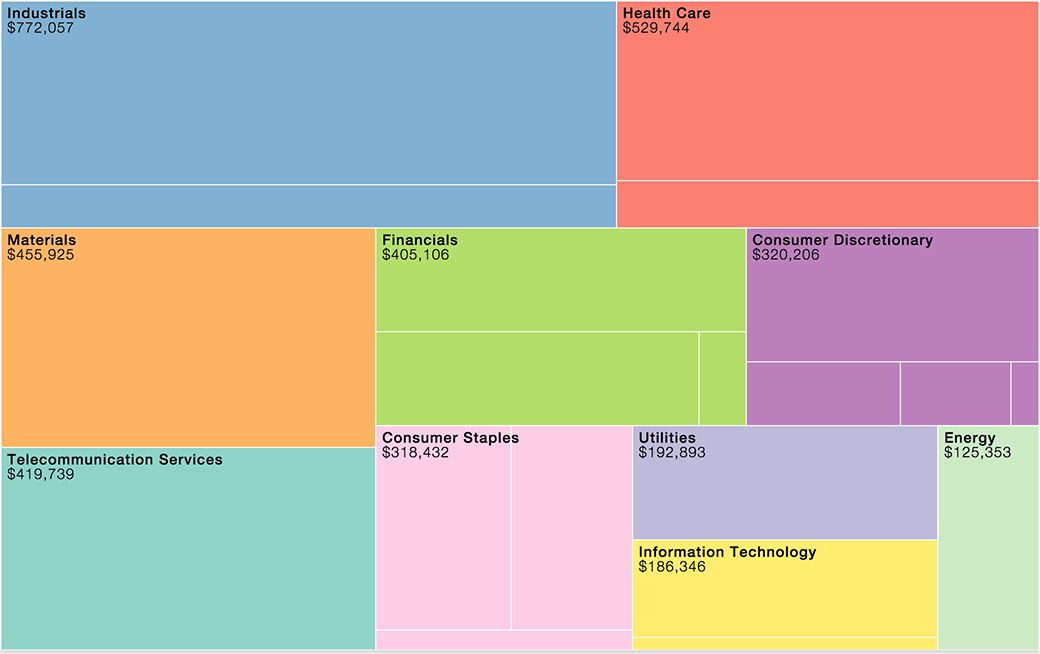Investor Decision Support
I am building a investor decision support tool that will give an accurate visualization of current market exposure. The project has four main phases: visualization, data gathering, composite mapping, data analysis, and interactivity. I plan to use IBM Watson services for gathering and analysis, and IBM Watson UI Patterns when buiding out the interactivity.
Data Visualization: Portfolio Allocation

Tap to Launch Demo
A prototype of the visualization is complete. The user can get a quick view of her exposure to different sectors using a tree map. It uses a fixed portfolio.
Data Gathering
Holdings data are available on a quarterly basis from SEC.gov. The list of “13F Companies” (professional money managers), must be parsed and de-duped. The resulting list of CUSIP numbers must then be mapped to ticker symbol and company name. The list shall be divided into various types of composites, e.g. ETFs. For each company in the 13F list, we need to locate the most recent 13F-HR, a quarterly report containing holdings information. Holdings data gathering will be non-trivial, as government records are disorderly and management companies publish their holdings in different formats and locations. Watson insights may help with finding the shortest and most reliable gathering process.
Composite Mapping
A data map will be built whose keys are composite company symbols, and whose value is a collection of holdings, with percentage weightings. Since a composite can contain a composite, the calculation may be n levels deep, with less significant fractions at deeper levels. To limit processor usage to the most relevant data, recursive processing may be used, and a summary threshhold set.
Interactivity
Portfolio Input
The user interface must support typed portfolio data entry at a minumum. Additional means may include input of data files, or integration with a brokerage or financial site. A rich “verbal interview” process could be conducted using Watson Natural Language Processing Systems (NLPS). This could produce a more thorough view of market exposure, if the questions prompt inclusion of all assets. In essence, Watson would be performing an interview very similar to that of a financial advisor.
Question, Answer, and Suggestion
Once a complete picture of holdings has been captured, the user may elect to interact with the system in multiple ways. He may explore his market exposure graphically, reaching conclusions based on data visualizations. He could compare his allocation to model portfolios representing a variety of strategies. Through natural language, the investor could state his intent for the session, set goals, and make a plan. The questions could be as simple as requests for calculation, as in “How much Coca-Cola is really in my portfolio?” “What are the weakest points in my market exposure?” “To which types of economic events is my current allocation vulnerable?” “Which model portfolio is most similar to mine?” “Where are my goals and my allocations in disagreement?” Depending on the depth and breadth of Watson’s financial corpus, questions could be as open-ended as “What should I do?” or “What would Warren Buffet do?”
Integration
The system may at some point support Single Sign On (SSO) for services such as Yahoo! Finance and TD Ameritrade. Users could then sync up their portfolio with this external system of record.